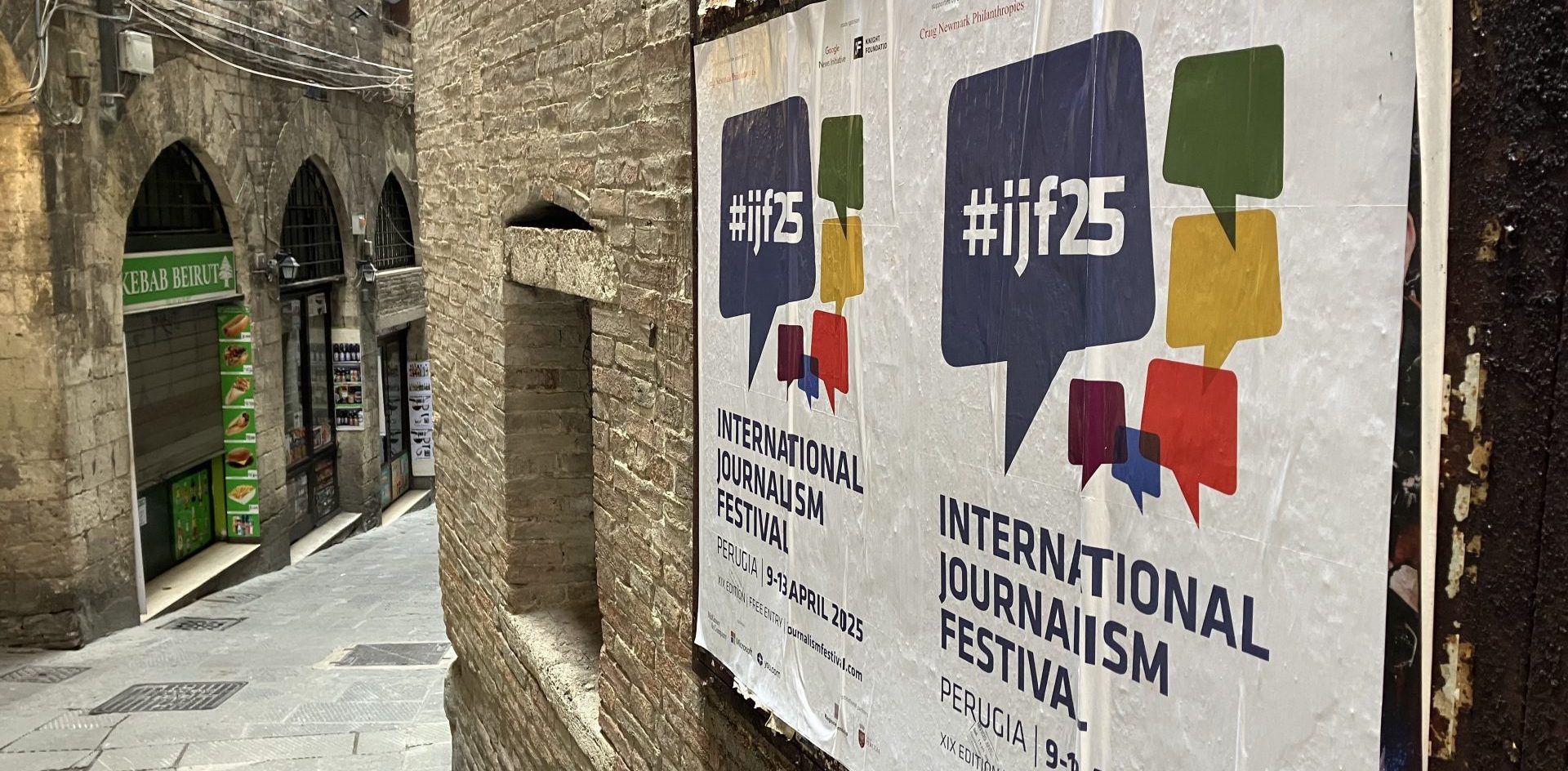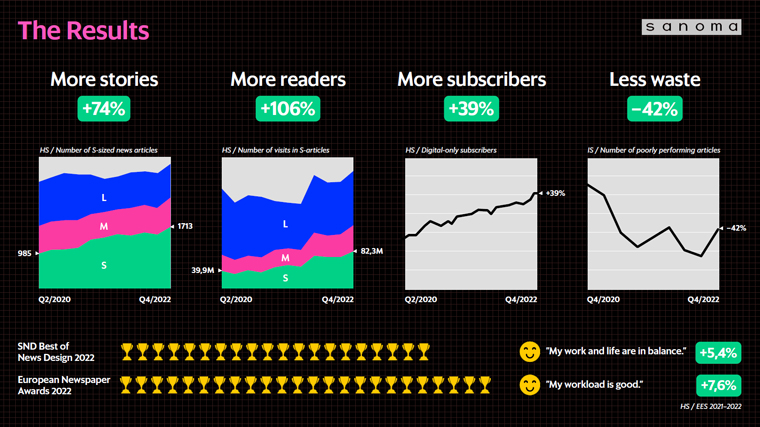
Newsletter
Newsletter
Sanoma Media Finland grew readership and subscribers by developing new editorial planning metrics.
4th May 2023

In the Pugpig weekly media bulletin, Pugpig’s consulting services director Kevin Anderson and digital growth consultant James Kember distill some of the best strategies and tactics that are driving growth in audiences, revenue and innovation at media businesses around the world.
As digital media businesses have shifted from being primarily funded through advertising to a diversified revenue mix including subscriptions, e-commerce, events and affiliate marketing, media leaders have found that they needed different metrics to manage their editorial operations. As the old cliché goes, you manage what you measure, and as the goals have changed so have the metrics to measure progress towards those goals. We’ve already covered how DC Thomson has moved from volume metrics to quality reads, and as the FT has leaned into its subscription strategy, it shifted to RFV – recency, frequency, volume metrics – as their preferred metric and other ways to measure propensity to subscribe.
In the most recent example, INMA has highlighted how Finland’s Sanoma has developed metrics to help it manage its editorial operations to support its conversion efforts. In the past, they noticed that “big, engaging, flashy stories” teased from behind their paywall helped them convert “casual readers into subscribers”. Based on that, editors decided to commission more of these high-impact, high-effort stories.
The problem was that they had less newsroom resources for quick hit news stories, and they noticed that they were struggling to fill the top of their conversion funnel. “We didn’t have enough new non-subscribers to convert. Also, our perceived value as a news source was going down, according to studies,” Kalle Silfverberg, Editorial Development Manager for Sanoma Media Finland, said.
From their analytics and their reader research, they decided that they needed to expand their coverage with existing resources and improve subscription conversion.
To achieve these goals, they started to break down their stories by effort and used a T-shirt sizing system – small to XXL – that would be familiar to anyone who has worked in an agile environment. The measure of effort included the “length, photo and graphics effort (and) lead time”. They wanted to improve their planning and story budgeting so they could understand how to get “the most bang for the buck”.
To measure the impact of this new editorial framework, they began tracking the number of stories by size, the total number of readers and the total number of subscribers. These metrics have led them to do more small stories, more ‘plain news’ while being more selective in doing L and XXL stories. The results are impressive. With the growing number of small stories, they have increased their output by 74% and grown their digital readership and the number of subscribers. Just as importantly, they have reduced the number of poorly performing stories or wastage as it is referred to in lean management.

The big takeaways for us is that they recognised that they had over optimised for conversion and needed to rebalance their editorial efforts to improve awareness, the top of the funnel. Of course, due to the change in goals, they needed to change the metrics that they used. However, the most important lesson from this case study is that they translated these strategic goals into a language and framework that felt natural for their journalists and editors, which supported buy in for this change effort.
Last June the UK’s Competition and Markets Authority published the results from their year long study into mobile ecosystems. Within it they assessed a large range of perceived issues with the Apple/Google duopoly, looking into areas such as operating systems, native app distribution, cloud gaming and billing. They highlighted the high margins enjoyed by the two companies and whilst accepting that that does not indicate a lack of competition in itself, the high return on capital employed gave the regulator pause for thought.
As a result of the investigation, the CMA opened an probe into suspected anti-competitive conduct by Google. They were specifically concerned about Google Play’s rules which oblige app developers to use Google Play’s own billing system for in-app purchases. Due to Google’s dominant market position they felt that forcing users to use Google’s own payment system was potentially leading to higher prices and reduced choice.
Google has now responded with a proposal to allow developers to use alternative payment options. “Under these new proposals app developers would be able to offer a different payment system of their choosing, known as ‘Developer-only Billing’ (DOB), or offer users a choice between an alternative payment system and Google Play’s billing system, known as ‘User Choice Billing’ (UCB)”, the regulator explained. This allows third party payment providers to “market their services to app developers” which should enable “greater innovation and competition for Google Play in-app payment services and allowing app developers to have a more direct relationship with their customers”.
In this bulletin in early March we wrote about Google rolling out User Choice Billing to a total of 35 territories after pressure from various regulators but this notably did not include the UK. However, in a blog post, Google’s Director of Legal, Oliver Bethell adds more detail to the CMA’s comments, explaining that “under the commitments, developers will be able to add an alternative in-app billing system, alongside Google Play’s billing system, for their mobile and tablet users in the U.K. At checkout, users will be able to choose which billing system to use. These options will be presented in a neutral manner allowing users to make an informed and engaged choice.”
Alongside this, Google is offering a 4% reduction in the fee they charge the developer when a user selects alternative billing. However, they will incentivise the use of their own billing system, as when developers choose not to offer Google Play billing at all, the service fee the developer pays will be reduced by a smaller amount, 3%.
The CMA appears fairly happy with the response from the tech giant and in announcing a consultation on the proposals they’ve included a notice stating that they intend to accept these commitments although they remain keen to get feedback on the reduction of the service fee. It remains to be seen if the incentivisation of the developer continuing to offer Google Play Billing is a sticking point, but it looks likely that both sides are close to an agreement.
Pugpig’s Consulting Services team is helping our publishing partners to design strategies to increase subscription growth, enhance retention rates and diversify revenue. If you would like to discuss how we can help you, contact us at info@pugpig.com.
Here are some of the most important headlines about the business of news and publishing as well as strategies and tactics in product management, analytics and audience engagement.

Newsletter

Newsletter

Newsletter

Newsletter

Newsletter